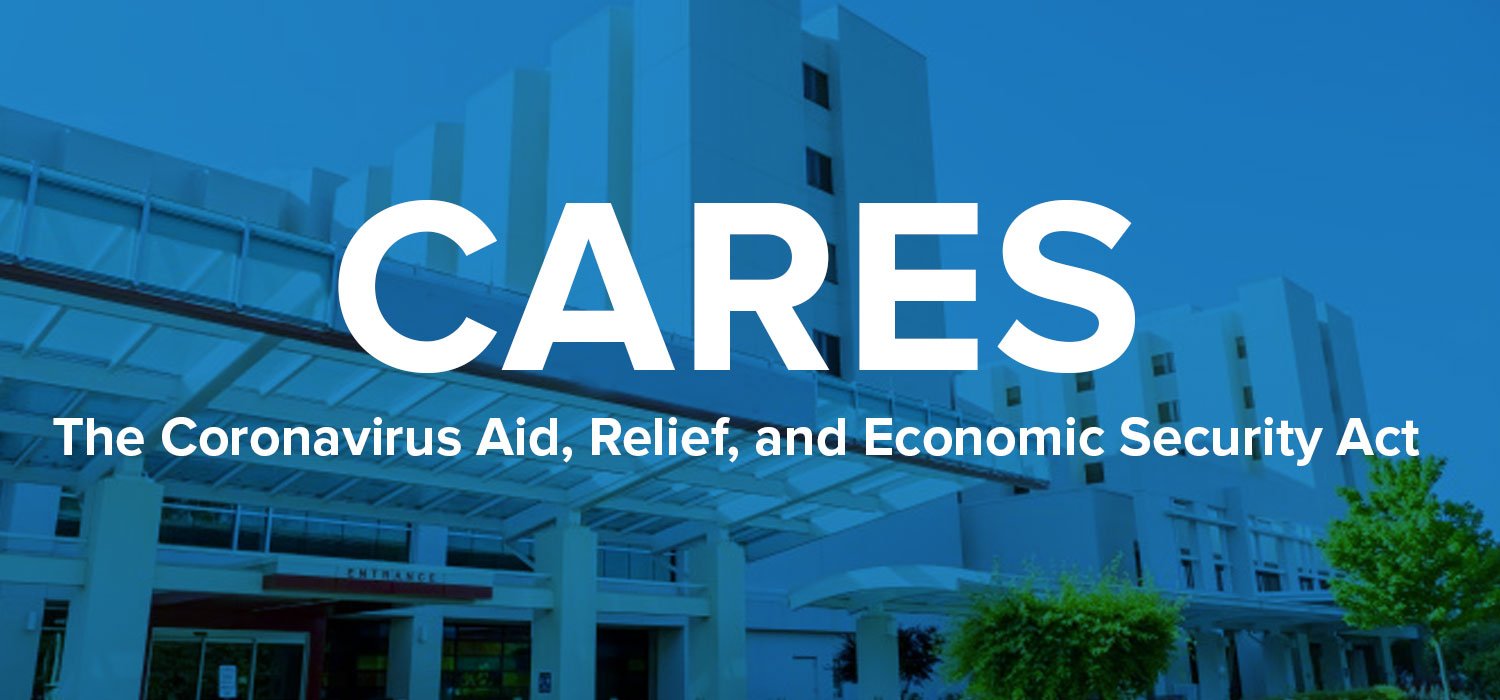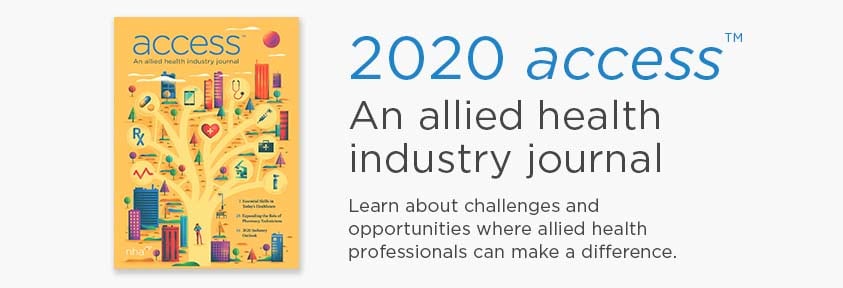If you’re an allied health educator concerned about the impact of COVID-19 on higher education, you’re not the only one.
According to a survey by the Strada Education Network, a majority of employees in the education industry believe that the pandemic will affect them personally for six months or more. Higher education has been hit hard by COVID-19, including allied health education. Postsecondary educators and students are worried, and many allied health educators are concerned that over 350,000 fewer students renewing their FAFSA for the 2020-21 cycle points to trouble ahead.
How can the CARES Act ease the financial and structural impacts of COVID-19 on allied health education programs? Where should the focus of allied health educators be in the wake of the pandemic?
“The ultimate goal, even throughout this crisis, is to do everything possible to sustain a quality allied health program and meet expectations of employers as it relates to necessary skills upon hire. This level of focus on quality may increase expenditures simply due to the immediate need to transition to digital learning and inability to properly plan and budget for this delivery method. The HEERF portion of the CARES Act can help cover the unexpected expenses students and/or institutions may incur during this time,” says Kristle Funke, Director of Partnerships for NHA.
The CARES Act provides financial relief to education institutions and students to help rebound from the loss of income and additional expenses caused by the COVID-19 pandemic.
The CARES Act created a relief program for postsecondary education, including allied health education, called the Higher Education Emergency Relief Fund (HEERF). The Higher Education Emergency Relief Fund is set to distribute about $14 billion in funds to provide direct and indirect relief to both students and schools. Additionally, the CARES Act created the Elementary and Secondary School Emergency Relief (ESSER) Fund, which has $13.2 billion reserved to support K-12 institutions. Career and Technical Education programs, including those who offer health science courses, can receive financial assistance through this fund.
HEERF Funds for Allied Health Students (Student Distribution)
Allied health students enrolled at ALL accredited schools and attending campus-based programs can apply for emergency financial aid grants to help with expenses related to the disruption COVID-19 has caused to campus operations. This has been dubbed the “HEERF Student Share.” Students enrolled in exclusively online programs currently do not qualify for this need-based aid. Eligible student expenses include:
- Course materials
- Technology
- Food
- Housing
- Healthcare
- Childcare
Upwards of $6 billion has been allocated to provide these cash grants, which will provide up to $6,195 per eligible student.
HEERF Funds for Allied Health Educators (Institution Portion)
Allied health education programs have been tasked with rapidly expanding remote learning programs. The Institutional Portion of the HEERF released $6.28 billion to cover any cost associated with significant changes to the delivery of instruction caused by COVID-19. (This includes funds to pay employees/contractors.)
It’s important to note that allied health education institutions that do not apply for student distribution will not be eligible to receive money from the institution portion of the CARES Act.
Elementary and Secondary School Emergency Relief Fund
Local Educational Agencies (LEAs) are eligible to receive assistance through the Elementary and Secondary School Emergency Reflief Fund, also called the ESSER Fund, to help address the impact that COVID_19 has and continues to have on schools across the United States.
According the the Department of Education, ESSER funds are awards to state educational agencies (SEAs), in the same proportion as each State received funds under Part A of Title I of the Elementary and Secondary Education Act. The SEAs then provide LEAs with the emergency relief funds. You can view the amount allocated to your state here.
LEAs are eligible to receive monies under the CARES Act to support:
- Activities to address the needs of low-income students, students with disabilities, English learners, racial and ethnic minorities, students experiencing homelessness and foster care youth
- Purchasing educational technology for students, including one-on-one devices and internet connectivity
- Providing mental health services and supports
- purchasing educational technology to support online learning for students
- Training and professional development
- Planning and implementing summer learning and supplemental afterschool programs
- Planning and training for re-opening of schools
- Working with partner organizations and nonprofits to address community needs
LEAs will be asked to budget by quarter, rather than the entire period of time, in order to ensure timely and appropriate drawdowns that liquidate the dollars but also extend its impact.
Visit the website of your state educational agency for more information and to learn about the application process.
Are There Any Reasons for Allied Health Educators to Remain Optimistic, Despite the COVID-19 Pandemic?
“Much like NHA’s mission, I believe the outcomes of the HEERF portion of the CARES Act will be the ability for students, educators and institutions to provide access to a better future despite the current crisis through investment in innovation and collaboration,” Funke says.
A recent survey found that Americans looking to go back to school in the next six months are leaning toward non-degree training over completing 4-year degrees. Of greater interest to students impacted by COVID-19 are shorter online skills development courses, certificates, or licensure. Overall, students believe that replacing work lost due to COVID-19 (or securing jobs in new fields altogether) will require education. Widespread shutdowns have demonstrated the essential nature of allied health professions, which may appeal to members of the workforce seeking higher levels of job security. Allied health students still desire strong technical and clinical skills that are transferable to new careers, even if they don’t have the time to gain them through traditional on-campus methods.
Although higher education will look different through the remainder of 2020 and into 2021, the CARES Act is here to ensure that allied health educators are prepared to adapt to meet the demands of a rapidly changing industry.




